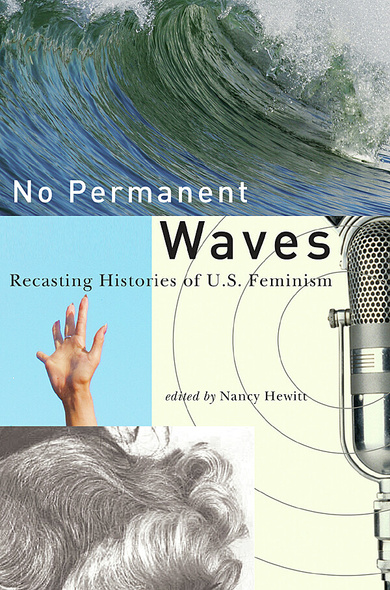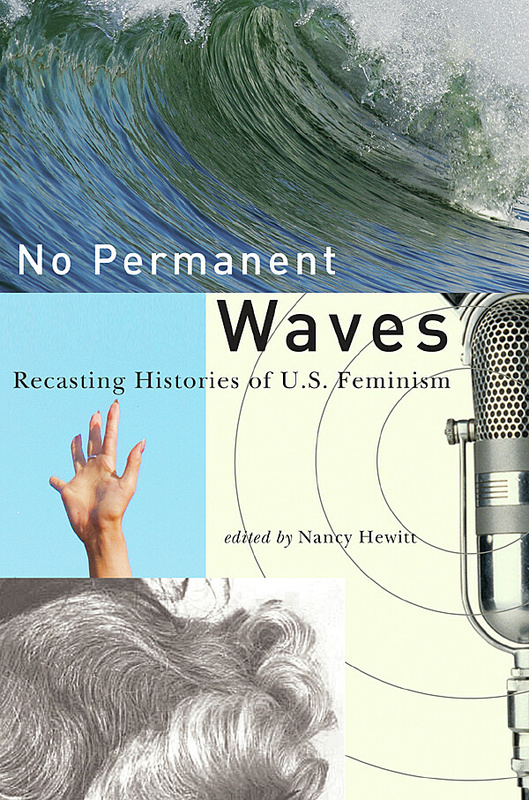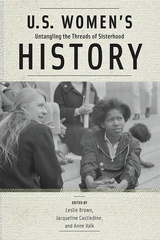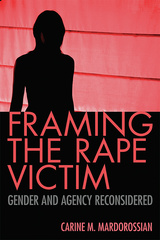No Permanent Waves
Recasting Histories of U.S. Feminism
Edited by Nancy A. Hewitt; Introduction by Nancy A. Hewitt
Rutgers University Press
No Permanent Waves boldly enters the ongoing debates over the utility of the "wave" metaphor for capturing the complex history of women's rights by offering fresh perspectives on the diverse movements that comprise U.S. feminism, past and present. Seventeen essays--both original and reprinted--address continuities, conflicts, and transformations among women's movements in the United States from the early nineteenth century through today.
A respected group of contributors from diverse generations and backgrounds argue for new chronologies, more inclusive conceptualizations of feminist agendas and participants, and fuller engagements with contestations around particular issues and practices. Race, class, and sexuality are explored within histories of women's rights and feminism as well as the cultural and intellectual currents and social and political priorities that marked movements for women's advancement and liberation. These essays question whether the concept of waves surging and receding can fully capture the complexities of U.S. feminisms and suggest models for reimagining these histories from radio waves to hip-hop.
A respected group of contributors from diverse generations and backgrounds argue for new chronologies, more inclusive conceptualizations of feminist agendas and participants, and fuller engagements with contestations around particular issues and practices. Race, class, and sexuality are explored within histories of women's rights and feminism as well as the cultural and intellectual currents and social and political priorities that marked movements for women's advancement and liberation. These essays question whether the concept of waves surging and receding can fully capture the complexities of U.S. feminisms and suggest models for reimagining these histories from radio waves to hip-hop.
From Seneca Falls to hip-hop, this striking collection pushes us to rethink the who, what, when, where, and why of U.S. feminist history. The wide-ranging essays toss out the overly tidy generational model and replace it with complex, rich, and inclusive accounts of our feminist past. Highly recommended.
An important contribution to the ongoing dialogue on the meaning of feminism and its application not just within the academy, but also to a larger and more general political, social, and intellectual forum. Recommended.
As an intellectual enterprise the book successfully established the overlapping and intertwined configurations of feminist movements from the 1840s to the present. Hewitt's book is a compelling guide to contemporary interpretations of American feminisms. Its thought-provoking essays will be especially useful in classroom distussions about historical practice.
No Permanent Waves offers not only crucial information on the histories of feminism but also evidence for new historiographical claims about how feminism relates to itself across time, positionality, race, region, class, sexuality, occupation, and especially generation. Featuring a range of essays on manifestations of feminism and their relationships to time and generation, No Permanent Waves demonstrated the strength of attending to difference.
NANCY A. HEWITT is a professor of history and women's and gender studies at Rutgers University, New Brunswick. Her books include Women's Activism and Social Change: Rochester, New York, 1822–1872; Southern Discomfort: Women's Activism in Tampa, Florida, 1880–1920s; and A Companion to American Women's History.
Introduction
Part I: Reframing Narratives/Reclaiming Histories
Chapter 1. From Seneca Falls to Suffrage?
Chapter 2. Multiracial Feminism
Chapter 3. Black Feminisms and Human Agency
“We Have a Long, Beautiful History”
Chapter 5. Unsettling “Third Wave Feminism”
Part II: Coming Together/Pulling Apart
Chapter 6. Overthrowing the “Monopoly of the Pulpit”
Chapter 7. Labor Feminists and President Kennedy’s Commission on Women
Chapter 8. Expanding the Boundaries of the Women’s Movement
Chapter 9. Rethinking Global Sisterhood
Chapter 10. Living a Feminist Lifestyle
Chapter 11. Strange Bedfellows
Chapter 12. From Sisterhood to Girlie Culture
Part III: Rethinking Agendas/Relocating Activism
Chapter 13. Staking Claims to Independence
Chapter 14. “I Had Not Seen Women Like That Before”
Chapter 15. The Hidden History of Affirmative Action
Chapter 16. U.S. Feminism—Grrrl Style!
Chapter 17. “Under Construction”
Part I: Reframing Narratives/Reclaiming Histories
Chapter 1. From Seneca Falls to Suffrage?
Chapter 2. Multiracial Feminism
Chapter 3. Black Feminisms and Human Agency
“We Have a Long, Beautiful History”
Chapter 5. Unsettling “Third Wave Feminism”
Part II: Coming Together/Pulling Apart
Chapter 6. Overthrowing the “Monopoly of the Pulpit”
Chapter 7. Labor Feminists and President Kennedy’s Commission on Women
Chapter 8. Expanding the Boundaries of the Women’s Movement
Chapter 9. Rethinking Global Sisterhood
Chapter 10. Living a Feminist Lifestyle
Chapter 11. Strange Bedfellows
Chapter 12. From Sisterhood to Girlie Culture
Part III: Rethinking Agendas/Relocating Activism
Chapter 13. Staking Claims to Independence
Chapter 14. “I Had Not Seen Women Like That Before”
Chapter 15. The Hidden History of Affirmative Action
Chapter 16. U.S. Feminism—Grrrl Style!
Chapter 17. “Under Construction”










